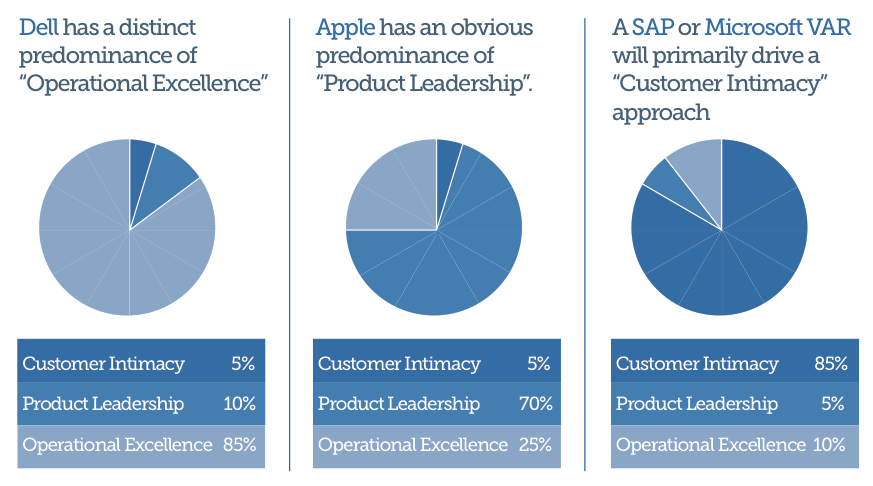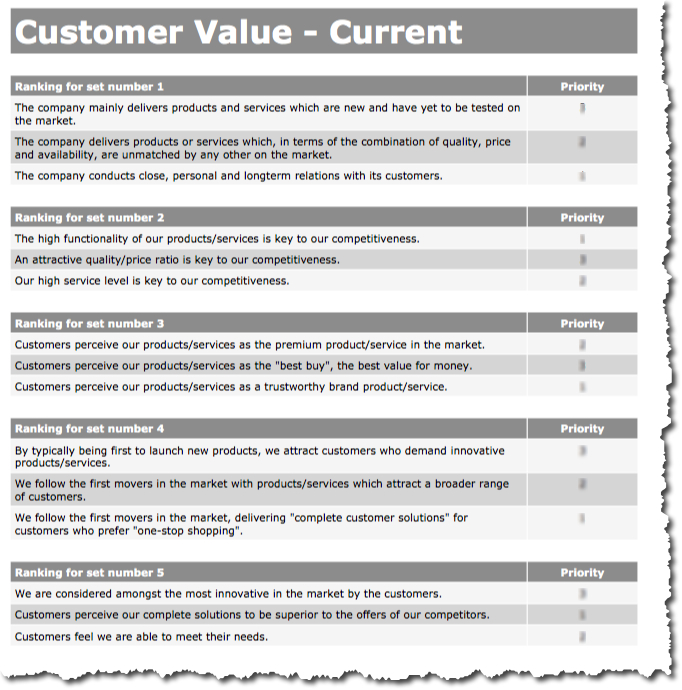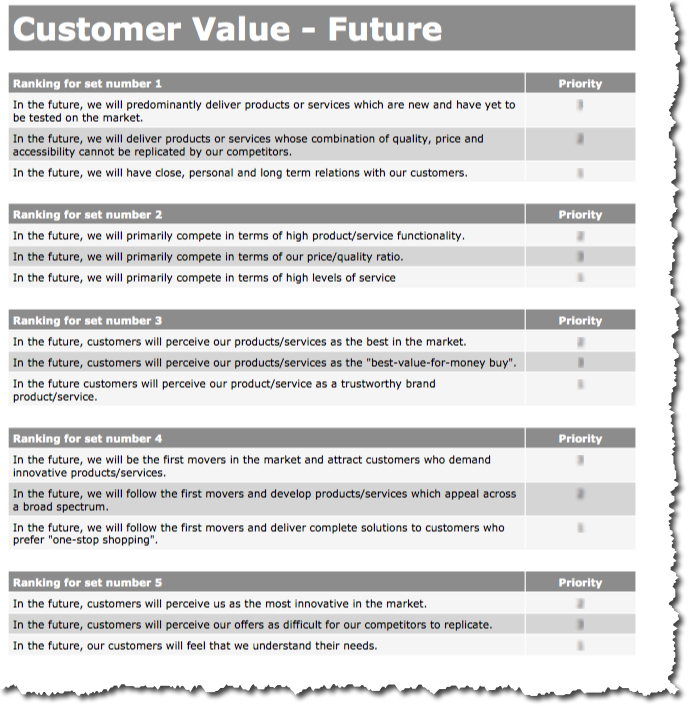The magical 10 minutes – part 3
This is the 3rd post in the series “The Magical 10 minutes”.
How long does it take to check if your management team is pulling and pushing in the same direction?
10 minutes!
The first blog post explained how you could ask yourself and each member of your management team to prioritize the 6 sources for financial growth.
The second blog post dealt with assessing the competitive environment.
This post #3 is about how to check if you all agree on what is your Customer Value Proposition.
Customer Value Proposition
Every company has a Customer Value Proposition. Customer Value Propositions will obviously be phrased in very different ways specific for each individual company and/or business unit. However, any Customer Value Proposition will have a certain proportion of the following three value elements:
- [slider title=”Customer Intimacy”] is the ability of a supplier to become accepted and known as the regular partner with its customer. Customer intimacy creates a virtuous circle: the better the supplier knows the customer company with its objectives and difficulties, the better able he is to provide an optimal solution. The more adapted the supplier’s product or service is, the happier the customer will be, and the stronger the “intimacy” between the two parties.[/slider]
- [slider title=”Operational Excellence”]Operational Excellence is a philosophy of leadership, teamwork and problem solving resulting in continuous improvement throughout the organization by focusing on the needs of the market, empowering employees, and optimizing existing activities in the process.[/slider]
- [slider title=”Product Leadership”] is the ability to deliver state-of-the-art products in the market. Product leadership can be achieved by innovation, design, development, time-to-market delivery and brand-marketing of products (or services).[/slider]
Any Customer Value Proposition can be translated into the “Three Value Element Concept” and any Customer Value Proposition will have a dominating value, a secondary value and least important value.
Here are examples of the Customer Value Proposition of 3 different types of companies:
 Three different Customer Value Propositions
Three different Customer Value Propositions
What is your Customer Value Proposition today and in the future?
Now ask yourself and each individual member of your management team to express your Customer Value Proposition as it is today and what you believe it should be in the future (18-24 months from now).
You can use the following framework asking yourself and each individual member of your management team to assign a priority 1,2,3 to the 3 statements in the 5 sets to describe the current situation:
 Define the present Customer Value Proposition
Define the present Customer Value Proposition
You can use the following framework asking yourself and each individual member of your management team to assign a priority 1,2,3 to the 3 statements in the 5 sets to describe the future ambition:
 Customer Value Proposition for the future
Customer Value Proposition for the future
Comparing the way you have each set the priorities will tell you just how aligned you are on your company’s Customer Value Proposition.
The choice of Customer Value Proposition determines a set of Critical Success Factors, which the company must face and prioritize in order to execute its’ proposition. If the management team is disagreeing on the Customer Value Proposition today and in the future, they will also disagree on what the Critical Success Factors are and they will disagree on the associated critical management areas which deserves focus and attention. They will be pulling and pushing in all different directions.
The next blog post # 4 will show examples from software companies, who have performed this exercise described in the first 3 blog posts in #The magical 10 minutes” series. Post #4 is about assessing the 6 sources of financial growth.
This series of blog posts on alignment uses concepts from the ValuePerform strategy framework.
Source for value elements definition: Wikipedia









